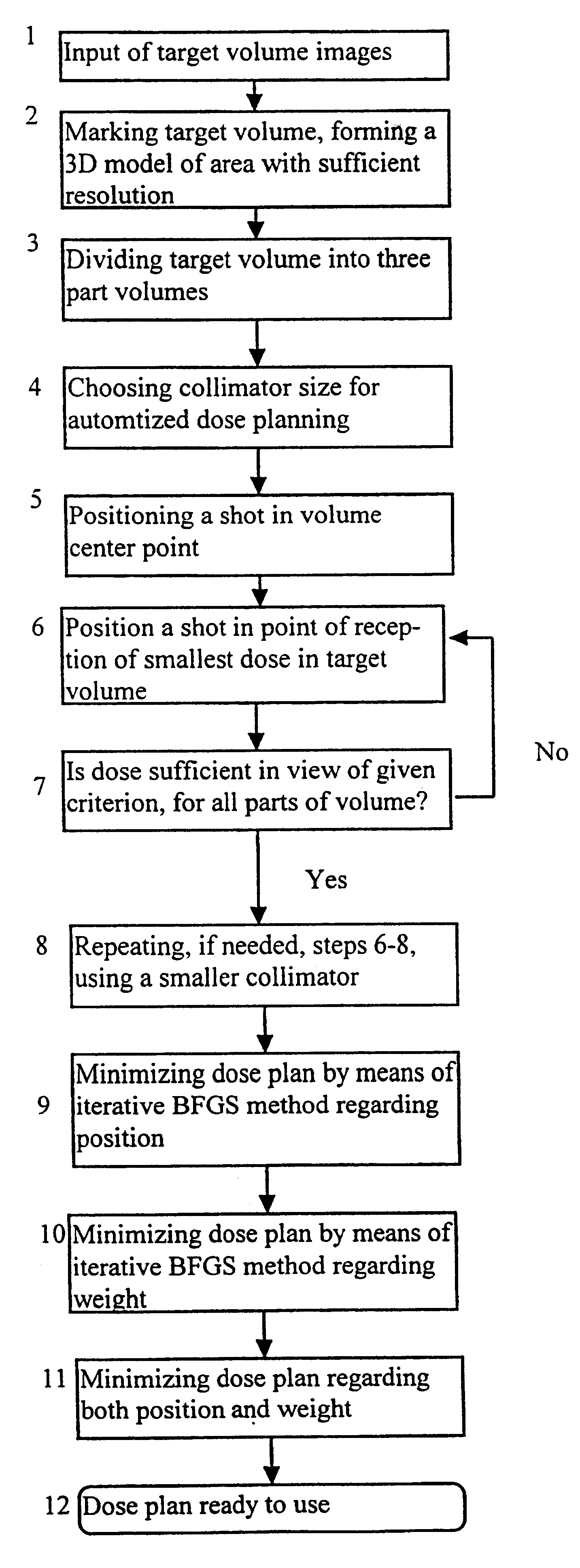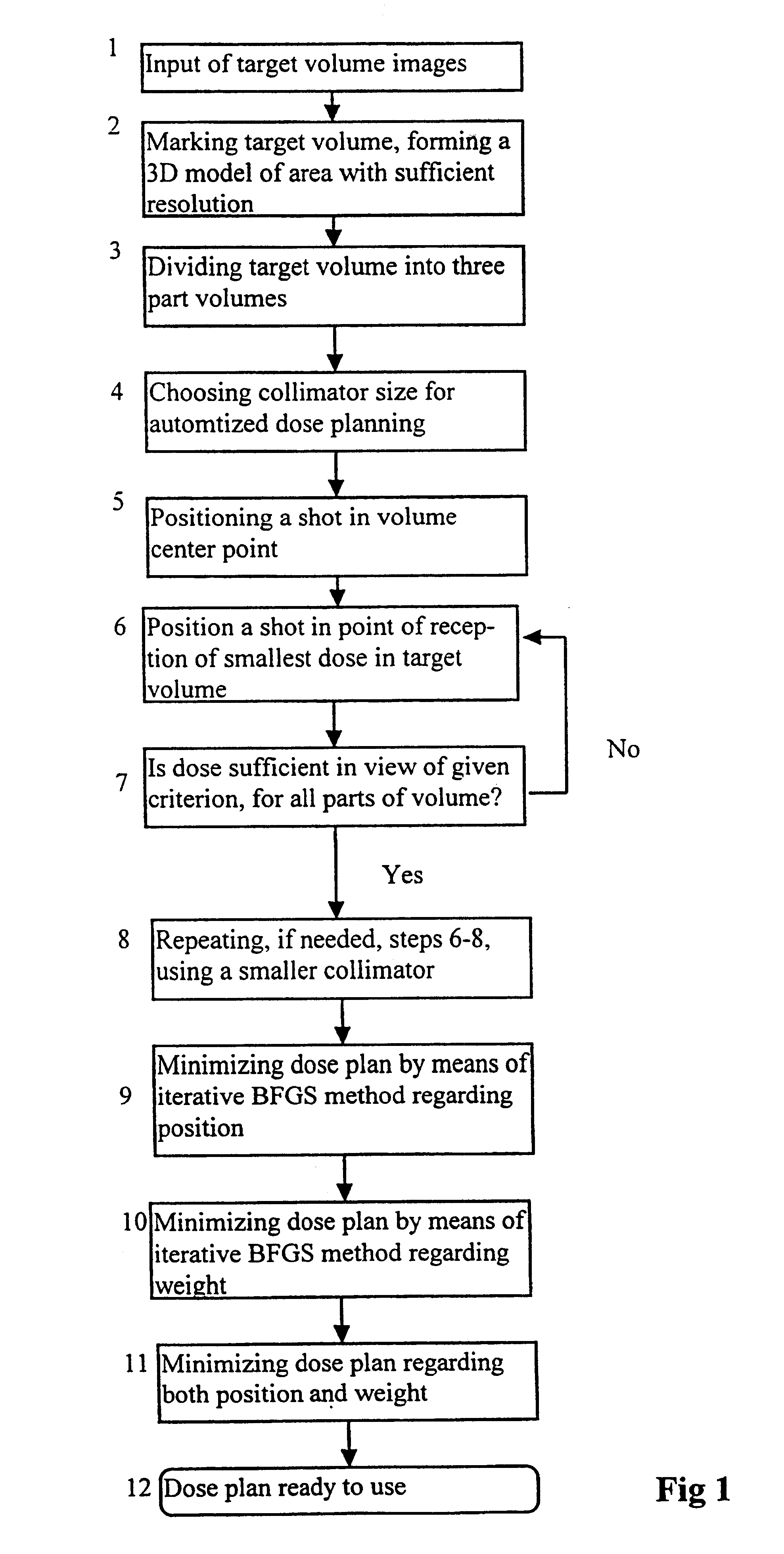Method for automatized dose planning
a dose planning and automated technology, applied in the field of automated dose planning, can solve the problems of not being applied to three-dimensional viewing, high demands on experience and skill, and essentially manual process time-consuming
- Summary
- Abstract
- Description
- Claims
- Application Information
AI Technical Summary
Benefits of technology
Problems solved by technology
Method used
Image
Examples
Embodiment Construction
The method will be described in the following for exemplifying purposes in more detail by means of one example. The method comprises the following steps:
In a first step 1 anatomical images are inputted into the computer with the aid of the dose planning program. The images show clearly the target volume divided into thin laminae. In a second step 2, the target volume is marked by means of a drawing tool in the computer in order to thus provide information on the location of the target volume. On the basin of the data thus received the program produces a three-dimensional model of the target volume, with a predetermined resolution. This target volume is thereafter divided into three part volumes in step 3, viz.:
the interior volume;
the lamina volume immediately interiorly of the border of the target volume; and
a volume built up around the area surrounding the target volume.
Thereafter, the configuration relating to the start of the dose planning is to be determined. Thus, in a first st...
PUM
 Login to View More
Login to View More Abstract
Description
Claims
Application Information
 Login to View More
Login to View More - R&D
- Intellectual Property
- Life Sciences
- Materials
- Tech Scout
- Unparalleled Data Quality
- Higher Quality Content
- 60% Fewer Hallucinations
Browse by: Latest US Patents, China's latest patents, Technical Efficacy Thesaurus, Application Domain, Technology Topic, Popular Technical Reports.
© 2025 PatSnap. All rights reserved.Legal|Privacy policy|Modern Slavery Act Transparency Statement|Sitemap|About US| Contact US: help@patsnap.com


